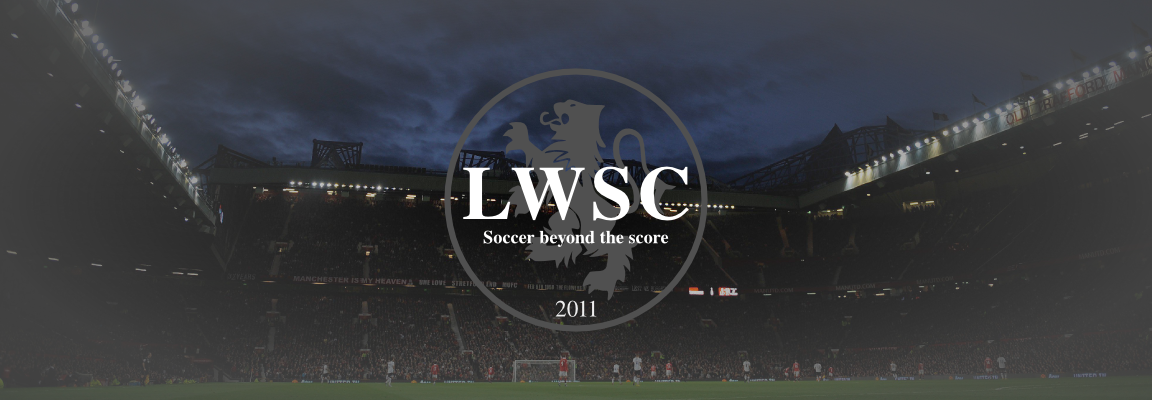Deep Dive Tactics w/ Chattanooga Red Wolves HC Tim Hankinson
Attack Isn’t Separate from Defense
US Soccer Federation coach licensing courses focus on the “four moments” of the match – attacking, transitioning to defense, defending, and transitioning to attack. However, Chattanooga Red Wolves head coach Tim Hankinson has a slightly different approach.
“I don’t look at attack as a separate topic than defense,” Coach Hankinson told me when we spoke on April 8th, less than 48 hours after the club’s first win against Forward Madison. “I feel like they have to be fused in certain ways.”
He notes that depending on what is expected during the game depends on both offensive and defensive positioning. Being able to string only a few passes together means “we need to play more direct or we’ll never get to their goal” and play with a higher back line to win the ball higher. However, when the Red Wolves expect to have more possession, they can keep their back line deeper.
“When we’re a very good possession team we can sit back even further,” the coach noted. “If we win the ball close to our goal, we can still possess out. That’s part of the thing we’re trying to get the players to understand – the build-up versus a more direct ball.”
The impression Coach Hankinson gave me is that his philosophy is that rather than there be four moments of the game, there are two – attacking but preparing to defend and defending but preparing to attack. And scholar’s of the beautiful game I’m sure can see his point.
In fact, during the Red Wolves win against Forward Madison on April 6th in the 44th minute, you can see the Red Wolves lose possession after a cross into the box (see GIF below). However, the midfield’s defensive shape allows them to attack immediately. As Madison attempts to clear, Ualefi playing as a defensive midfielder (#6) wins the ball, settles, and controls for a pass to fellow defensive midfielder Caparelli who drives toward the box.
Note how striker Eamon Zayed moves back to cover as Caparelli drives in. Then as Caparelli passes, Ualefi moves more centrally and behind – as both defensive cover and perhaps as an outlet pass. Although the ball is eventually cleared after this move, it is this positioning and movement that may allow the Red Wolves to be dangerous going forward and hold tight defensively.
“The build-out versus a more direct ball sometimes it’s just situational,” the former Indy Eleven coach noted.
Hankinson Cautious on Full Back Use in Attack
I’ve noted to some of my fellow coaches and players that the modern game has almost inverted the pyramid. Playing a 4-3-3 or variants like the 4-2-3-1 or 4-1-4-1 formation and pushing the outside backs up into the attack basically creates a scenario where the team’s formation is now a 2-5-3 or a 2-3-5. The defensive cover being only the stranded center backs.
Some teams have gone with a three in the back system allowing more defensive cover while continuing the have enough players out wide to disrupt opposition defenses.
Coach Hankinson takes a more movement-centric approach. He noted that pushing two full backs high at the same time can be dangerous, and one needs to cover for the other during attacks. While it’s possible for other positions, for example, a defensive midfielder to stay back and cover, Hankinson seems to want to pivot his back line, instead of having a #6 move to cover wide or drop in to allow a center back to cover wide.
As the heatmap below shows, during their match against Madison, the Red Wolves pushed up the pacey right back Richard Dixon, while left back Vangjel Zguro held his position for most of the match. Dixon can be dangerous in the attack, as shown with his late run into the box for the Red Wolves’ second goal late against North Texas.
“He’s in a great place in his career,” Dixon’s coach noted. “He’s reached a maturing of understanding how to get into the attack, and also how and when to defend – picking those moments. He’s also athletically in his prime… he’s as fit as any player in the league.” Dixon was named Man of the Match against Madison and named to the USL League One Team of the Week.

Repairing the Back Line After North Texas Loss
Mistakes on the back line were the cause of the Red Wolves’ loss in their opening match away at North Texas. Besides not challenging the young Ricardo Pepi physically, coach noted that it was individual mistakes that led to the team losing.
“We made two bad defensive blunders,” he calmly noted, as only a coach of Hankinson’s experience and demeanor can. “That gave them two goals.”
While counterfactuals are fun, there was real work done over the week to solidify the back line after the near embarrassing defeat in Frisco the week prior.
“We didn’t have a body on Pepi,” Hankinson noted. “We gave him a free day. The job of a central defender is to make the life of a striker hell… we chose Leo [Folla].”
Coach explained expectations weren’t high for Folla due to lack of experience, but he wanted to have a defender who liked getting his body on an opposing player – a trait Hankinson thought was needed. Given the result of the match, it is hard to question this decision.
But even with a weeks training, Madison’s Paulo Junior was able to make a diagonal run in the 18th minute onto a well-hit direct over ball. Junior settled the ball behind both backs who were scrambling to cut off the run. Folla made the sliding block in the end, after moving inside the on-rushing Junior.

However, besides this example, the Red Wolves back line was more solid and lacked the individual “blunders” of the week before. Madison had a few other looks on goal, but the Red Wolves players were up to their challenge on the night.
Preparing for Matches – “Players have to make good decisions”
Several times during our discussion, we turned toward match preparation. Gameday decisions for coaches come down more to line ups and substitutions. Everything else needs to be discussed and practiced prior to the match – so preparations became paramount.
“Players have to make good decisions,” the coach noted. Given that football is a very fluid game, situational awareness and understanding of the plan from moment to moment is important. Perhaps this is one reason the Red Wolves have built a team with meaningful professional experience. Soccer IQ is something that grows with time. It’s why some players even when they slow down can “read” the game better – it’s just experience. But, understanding the tactical plan and building chemistry between players is also critical to success as a professional club.
The coach noted that in training, whether 5v5 or 11v11, they practice winning the ball to play out of the back; but also on situational awareness as to when to go long.
“We work very often in practice… if we win the ball in our half, let’s try to build with passing,” Hankinson explained. “Because maybe we’re just too far away.” Hitting a forward who will hold up and look to build additional passes is part of the playbook – but a direct counterattack is not.
“We don’t have a player with sprinter speed,” he continued. “But, they have good situational awareness. If we win the ball in the attacking half, we can beat them in transition. Many of these teams push their wing backs very high and they’re left with two center backs covering an enormous amount of space.”
Preparing for a match isn’t all about the tactics and soccer IQ however. One thing I was curious about was switching so frequently from grass to turf for matches. Although crowd and atmosphere at some MLS 2 sides is small compared to other League One experiences so far, they do play on grass pitches. The Red Wolves and several others current home surfaces are turf.
Hankinson noted that the team has facilities to train on either grass or turf. Even when preparing to play on turf, the team will still practice for several days on grass.
“We only want to practice on turf a few days a week,” he explained. “The wear and tear on the legs is just less forgiving. But, we want to get on the surface we’ll be playing on.”
The coach noted even playing on a similar surface, conditions can be different pitch to pitch.
What Really Matters: Players Playing To Their Qualities
At the end of our discussion, Coach Hankinson reminded me of a truth across all sports, and indeed most competitive endeavors.
“It really comes down to how well the players play [execute] with their qualities,” he sagely noted.
A reminder why matches are played and not decided on paper. Players who don’t play up to their quality will find it difficult to compete. Those that perform well, have a better chance of winning, regardless of the system or tactical approach.
“It has to do with the quality of the players, in their execution, making the next pass, hitting the quality cross, hitting the far away shot… it comes down to the quality of execution of the players.”






